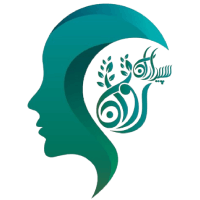
Blog
story therapy

Story therapy has its roots in history and various cultures and has gradually become recognized as a therapeutic technique. Story therapy in children is known as an effective tool to help them express their emotions, solve problems, and strengthen social skills.
فهرست عناوین
ToggleThe Role of Story Therapy in Expressing Emotions and Emotional Growth
By using stories, story therapy allows children to express their feelings and experiences in a safe and non-threatening environment. This method not only helps them solve problems but also supports their emotional and social development.
An Example of Practical Application of Story Therapy
For example, a child may be facing feelings of anger or sadness but may not be able to express them properly. The therapist can tell a story about a fictional character struggling with similar emotions. This story helps the child identify their feelings and talk about them.
Pioneers of Story Therapy
Some key figures in the development of story therapy include:
- Carl Jung: He focused on the influence of stories and myths on the human psyche and realized that stories can help children process emotions and experiences.
- Dr. Maurice Rennick: In the 1950s and 1960s, he worked on using stories in child therapy and introduced story therapy techniques.
- Jennifer Morris: She is also recognized as a pioneer of story therapy in working with children and contributed to developing creative methods in this field.

Story Therapy Techniques
The following are some of the techniques used in story therapy:
Storytelling
- Definition: The therapist tells a story that may relate to the patient’s problems.
- Purpose: To create an emotional connection and help the patient identify their feelings.
Writing Stories
- Definition: The patient is encouraged to write a story about their experiences.
- Purpose: This helps the patient process and reflect on their feelings and experiences.
Story Analysis
- Definition: Examining the themes, characters, and events of the story and their connection to the patient’s life.
- Purpose: To help the patient gain self-understanding and identify behavioral patterns.
Visualization
- Definition: The patient imagines the characters and events of the story and relates their feelings to them.
- Purpose: To facilitate emotional expression and enhance creativity.
Use of Symbolic Characters
- Definition: Introducing characters that symbolize particular ideas and can help the patient understand their feelings and problems.
- Purpose: To ease conversations about difficult topics.
Group Storytelling
- Definition: Holding group sessions where members share stories.
- Purpose: To strengthen social connections and the sense of belonging.
Play Therapy Techniques
- Definition: Combining story therapy with play therapy, especially when working with children.
- Purpose: To create a casual and enjoyable environment for emotional expression.
Use of Images and Art
- Definition: Using images and art to tell stories and express feelings.
- Purpose: To facilitate the therapeutic process and boost creativity.

Disorders Treatable with Story Therapy
Story therapy is recognized as an effective method for treating various psychological and emotional disorders and challenges. Here are some of the disorders that can be addressed through story therapy:
- Anxiety Disorders: Generalized anxiety, social anxiety disorder, and phobias. Story therapy can help children and adults identify their feelings and face their fears and anxieties.
- Depressive Disorders: Story therapy can assist patients in processing negative emotions and approaching them in a positive way.
- Behavioral Disorders: Attention Deficit Hyperactivity Disorder (ADHD) and conduct disorder. Using stories can help children understand their behaviors and learn social skills.
- Communication Disorders: In children with communication difficulties, story therapy can improve speech and communication skills.
- Stress and Tension Disorders: Stories can help children and adults cope with daily stress and tension.
- Emotional Disorders: Issues such as depression and feelings of loneliness. Story therapy helps patients better understand and share their emotional feelings.
- Developmental Disorders: In children with developmental challenges, story therapy can facilitate learning and comprehension of concepts.
- Sleep Disorders: Using calming stories can improve sleep quality and reduce worries.
- Family and Social Problems: In cases like divorce, loss, or major life changes, story therapy can help children process their emotions.
- Academic Disorders: Stories can boost motivation for learning and improve focus in children.
Differences Between Story Therapy and Other Therapeutic Methods
You might wonder what differences exist between story therapy and other types of therapy. Consider the following points:
Use of Stories
- Story Therapy: This method uses stories to express emotions and problems. The patient can express their feelings through the characters in the stories.
- Other Methods: Most other therapies talk directly about emotions without using stories.
Expression of Emotions
- Story Therapy: Stories help patients talk more easily about their feelings because they can see themselves in the story characters.
- Other Methods: In other approaches, patients speak directly about their feelings, which may be difficult for some.
Creativity
- Story Therapy: This approach encourages creativity and motivates patients to create their own stories.
- Other Methods: Most focus on logical analysis and direct conversation.
Suitability for Children
- Story Therapy: Especially suitable for children, as they can understand their emotions through stories.
- Other Methods: Some therapies may be less suitable for children.
Group Activity
- Story Therapy: Can be done in groups or families, where participants share their stories.
- Other Methods: Mostly individual and less focused on group interaction.

Story therapy, as a multifaceted and deep approach in psychotherapy, is an effective tool to facilitate emotional and cognitive processes, especially in children. By harnessing the powerful potential of storytelling and symbolism, it provides a safe and indirect space where individuals can confront existential challenges and psychological difficulties, gaining deeper understanding of themselves and their emotions.
Story therapy helps express deep and complex emotions by allowing individuals to safely articulate their multilayered feelings through narrative storytelling, which can reduce psychological tension and enhance inner calm. In analyzing lived experiences, stories serve as symbolic tools that offer opportunities to explore challenging experiences and extract new meanings. This process supports self-awareness and personal growth, fostering creativity and critical thinking. This method stimulates creative and critical thinking, encouraging individuals to find innovative and diverse solutions to their challenges.
Finally, by strengthening social and communication skills, story therapy helps individuals improve their interpersonal understanding and abilities through engagement with story characters.
Story therapy can be implemented in various settings, including individual, group, and family therapies. It is an effective tool for use in schools, treatment centers, and even home environments.
Ultimately, story therapy not only aids in improving mental and emotional health but also fosters deeper and more meaningful connections between individuals and the world around them. It reminds us that every story, whether simple or complex, can be a window into the rich world of human emotions and experiences, guiding us on the path of self-discovery and personal growth.
برای مشاوره رایگان و رزرو وقت (یا اگر تماس گرفتید و قادر به پاسخگویی نبودیم) شماره تماس خود را وارد کنید. ما به زودی با شما تماس می گیریم!



